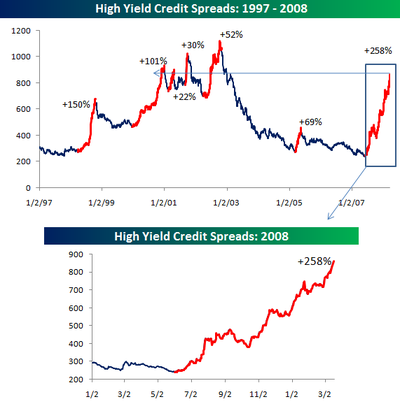HighYield Bonds
Post on: 12 Апрель, 2015 No Comment

Known in the financial world by their official name, high-yield bonds, but known to many investors as junk bonds, these bonds can provide a higher rate of return or higher yield than most other bonds. Junk bonds are risky investments, as investors saw in the 1980s debacle involving Ivan Boesky and Michael Milken. These two infamous financiers brought an awareness of junk bonds to the mainstream when their use of this risky debt to finance other endeavors came crashing down. The junk bond kings issued debt with nothing backing it up. When it came time to pay up, the money just wasn’t there, and investors were left holding worthless pieces of paper hence the term junk bonds.
High-yield bonds are bonds that didn’t make the grade. They are issued by companies that are growing, reorganizing, or are considered at greater risk of defaulting on the bond, for whatever reason. These bonds are often issued when companies are merging and have debts to pay in such a transaction. They are used as a method of financing such acquisitions.
High-yield or junk bonds include a risk of default and a risk that their market value will drop quickly. Since the companies that issue these bonds are not as secure as those issuing high-grade bonds, their stock prices may drop, bringing the market value of the bond down with it. This will mean that trading such a bond will become very difficult, therefore eliminating their liquidity.
Before the 1980s, most junk bonds resulted when investment-grade issuers experienced a decline in credit quality, brought on by big changes in business conditions or when they took on too much financial risk. These issues were known as fallen angels.
Sometimes a company begins by issuing lower-grade high-yield bonds and does well, with their sales numbers going up. Eventually this company reaches a level at which they can issue higher-grade bonds. This means that in the short term, you can receive high yields from their original low-grade bonds. It also means that they will call the bonds as soon as they are able to issue bonds at a lower yield.
If you see a company with great potential that has not yet hit its stride, perhaps you will want to take a shot at a high-yield bond from that company. If you are not that daring, you might opt for a high-yield bond mutual fund, which diversifies your investment so that you are not tossing all your eggs into one high-risk basket. In this manner, if one company defaults you are still invested in others in the fund, some of which may prosper.














